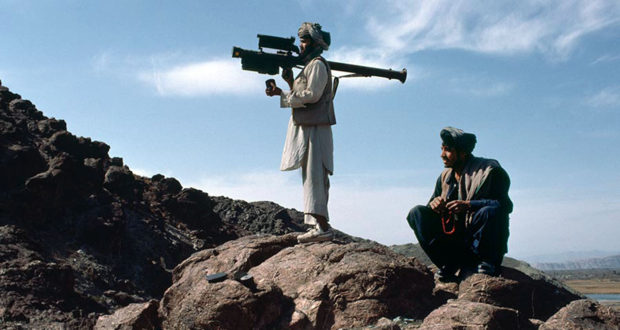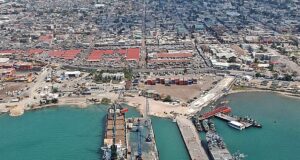May 6th, 2017
By Davis Florick – Senior Fellow
In the years since the Soviet invasion of Afghanistan, pursuing Gray Zone activities has lost its luster in the US. To establish a baseline and more fully comprehend the Gray Zone concept, General Votel, Commander US Special Forces Command, offered a useful definition during Congressional testimony where he said, “actors taking a ‘Gray Zone’ approach seek to secure their objectives while minimizing the scope and scale of actual fighting. In this ‘Gray Zone,’ we are confronted with ambiguity on the nature of the conflict, the parties involved, and the validity of the legal and political claims at stake.”[1] Although the concept has been employed for centuries, domestic aversions to clandestine regime change programs have limited the potential for executing otherwise pragmatic and beneficial efforts. With some notable exceptions such as the CIA’s limited campaign to arm rebels in Syria, Washington’s lack of support for insurgencies that aid US national interests stands in stark contrast to the policies of Moscow, Tehran, and others. Escaping some of the US domestic misperceptions regarding Gray Zone activities is paramount given the role these programs are playing in the decision making and policy efforts of other states. Similarly, considering Gray Zone opportunities and conflicts will continue, exploring the best means for the US and its partners to operate in the space is necessary. US assistance to the Mujahedeen in Afghanistan during the 1980s can provide lessons for contemporary Washington policymakers. As a result, a thorough examination of the US approach to involvement in the conflict is useful to better understand why decisions were made, and where potential benefits and drawbacks arose.
Although many people are vaguely familiar with the Soviet invasion of Afghanistan, few understand the conflict’s early history. During the mid-twentieth century, General Mohammed Daoud Khan gradually rose to power, culminating in a successful coup in 1973 establishing the Republic of Afghanistan. Orienting toward Moscow, the regime aggressively promoted women’s rights and other modernizing reforms. Khan’s coup was soon followed by a more hardline communist takeover in 1978 led by Nur Mohammad Taraki, Babrak Karmal, and Hafizullah Amin. In the midst of two coups and considerable efforts to drag Afghans toward a secular state, Islamists revolted against the weakened government. Adding to the religious tension were ethnic rivalries among Afghanistan’s diverse communities including, but not limited to, Pashtuns, Hazara, Tajiks, and Uzbeks and the mass oppression instituted by the communist government. During 1978-9, the Mujahedeen gained momentum against government forces, pushing the fledgling regime to the brink.
When Moscow finally crossed the border in December 1979, the conflict took on a new meaning. Fears rose in the US and elsewhere that Moscow was once again pursuing an opportunity to reach warm water ports in the Persian Gulf. In the meantime, the Mujahedeen had achieved its early successes with a characteristically conventional approach, largely due to the incompetence of government forces. However, in late 1979 and early 1980, the Russians scored a host of victories as the Mujahedeen casualty lists grew exorbitantly. From these defeats the opposition learned conventional tactics would not work, and it turned to guerilla-style operations from Afghanistan’s mountainous rural regions. The shift in strategy prolonged the conflict and created an opportunity for US intervention. Contrary to popular belief, however, Washington did not initially provide surface-to-air missiles. Rather, the Carter and Reagan Administrations focused on small munitions to preserve the mobility of the Mujahedeen. US aid was instrumental in preserving the opposition’s ability to move quickly, strike before superior firepower could be massed, and then intermingle with the local population. Drawing from the Vietnam experience, Washington and its local partners frustrated Moscow by denying the Soviet military the large-scale, conventional battles it had been trained to execute.
Operational considerations were only part of the equation for US officials who were also concerned about the wider political implications of assisting the Mujahedeen. During the Vietnam War, the political context – an interstate conflict – and the lack of transparency and accountability in the communist world, combined to embolden Chinese and Soviet assistance to Hanoi. However, Afghanistan’s characterization as a civil war and political sensitivities forthwith motivated Washington officials to provide aid clandestinely. Perhaps the most important aspect of US assistance was ensuring the weapons it provided could just as easily have been captured from government and Soviet formations. Consequently, the US purchased equipment from states that produced Soviet-designed material, including Czechoslovakia and Egypt. This course of action enabled successive US administrations to retain plausible deniability even as they pursued a bipartisan approach to assisting the Mujahedeen.
Washington was also able to work with willing partners in Beijing and Riyadh. Albeit limited, China’s animosity toward the Soviet Union encouraged the leadership in Zhongnanhai to provide a degree of assistance to the US and the Mujahedeen. More importantly, the US found a willing financing partner in Saudi Arabia. To offset the costs of supporting the opposition, Washington secured agreement from Riyadh that the Saudis would match aid dollar-for-dollar. Although some Saudi officials pursued a more radical fundamentalist line in their assistance to the Mujahedeen, matching funds undoubtedly made Congressional support easier to achieve. In actuality, every Congressional vote was worth double the line-item being requested. Saudi support was critical given the broader political context in the US surrounding the conflict in Afghanistan. The memory of Vietnam meant Washington’s best opportunity for providing aid was doing so multilaterally to offset costs.
Faced with an adversary that denied Soviet ground forces a clear target, Moscow’s policy makers and strategists chose to remove the Mujahedeen’s cover and concealment. By utilizing air power to destroy rural Afghan communities, the Soviets hoped to push the opposition into the open. The Soviets presumed if they could remove their adversary’s ability to hide and recuperate, then they would become much easier targets. However, the Mujahedeen responded by utilizing Afghanistan’s mountainous terrain to conceal themselves. More problematic for the Soviets was the impact on the rural population. These people were (a) driven into the cities, thereby sowing instability in urban areas, or (b) forced into refugee camps in Iran and Pakistan. Particularly in the case of the latter, the total of 7.5 million refugees in make-shift communities in Pakistan presented a ready-made and expanding pool of recruits from which the Mujahedeen could draw. Ingrained memories of Soviet attacks on their homes made these people into willing soldiers. Moscow’s decisions to rely on airpower and target civilians should not go unnoticed as they severely backfired by enraging rural peasants that might otherwise have attempted to avoid bloodshed.
The Mujahedeen responded to the Soviet change in strategy by employing surface-to-air missiles. Initially, the opposition used simplistic rocket propelled grenades, specifically the RPG-7. However, the turn toward Soviet airpower also came with a shift in ground strategy. Soviet forces withdrew to their established positions while Afghans were sent on offensive operations. Facing a weaker adversary, the Mujahedeen were less reliant on mobility; thus the opposition could incorporate larger weapon systems. Moscow’s reliance on airpower, starting around 1985, marked a turning point as the US began supplying Stinger missiles and other anti-aircraft equipment. It should be noted there remains considerable debate in academic circles over the political and military impact the Stingers had. Detractors argue the Gorbachev Administration had already decided upon, or was at least favoring, withdrawing Soviet forces by the time the Stingers were used widely. However, the broader anti-air package Washington provided increased Moscow’s costs at a time when its defense budget was becoming an albatross. As an example, Pakistani intelligence sources reported that in the first year of Stinger employment, those weapons were responsible for downing 140 aircraft. While the Soviets may have already decided to withdraw from Afghanistan by the time the Stingers were introduced, their employment likely discouraged any change of heart.
Despite their best efforts, US officials made one fatal mistake in their approach to Afghanistan. Washington allowed aid to be funneled through Islamabad, which in turn enabled the fundamentalist regime in Pakistan, led by General Zia ul-Haq, to assist like-minded entities. As a result, men like Jalaluddin Haqqani and other devout Islamists received US weaponry at the expense of more moderate factions within the opposition. By relying on Pakistan to distribute equipment, the US inadvertently supported ul-Haq’s Islamist vision for his northern neighbor. Although it served Washington’s short term goal of defeating the Soviets, it might have been better to wait till a more direct connection could have been established. Yet as it stood, by funneling support to fundamentalist groups, Pakistan had planted the seeds for a viable domestic insurrection even after the Soviets had withdrawn and the two super powers had largely shifted their focus. Islamabad’s efforts to advance a fundamentalist agenda, particularly its support to the Taliban, served to Washington’s detriment. Regardless of the broader US effort, how funneling equipment was handled has been the greatest criticism of its role in defeating the Soviet invasion of Afghanistan.
Lessons from how the US went about supporting a successful opposition movement in Afghanistan can prove invaluable for future Gray Zone operations. Specifically, purchasing armaments abroad served as an ideal means to reduce the risks of attribution. Given that many current and likely future conflicts will occur in areas where Soviet-made defensive technologies are prominent, the ability to arm opposition movements with these systems will be important. Similarly, providing the right mix of capabilities designed to raise the costs of warfare for the adversary cannot be underestimated. The light armaments and anti-aircraft technology supplied to the Mujahedeen imposed significant cost impositions on an already-constrained Soviet defense budget. Considering Washington’s economic strength against likely potential adversaries, including Moscow, the US’s ability to raise costs to unacceptable levels will be a significant factor. Ultimately, the Afghan experience should teach US decision makers of the utility that can be drawn from logistics and economics in Gray Zone operations.
The Soviet invasion of Afghanistan was one of the seminal moments in the Cold War and has come to help shape Central Asia, South Asia, and Middle East affairs in the years since. Following the 1978 coup and the Red Army’s crossing of the border in December 1979, Moscow’s senior leadership seemed to lose a sense of proportion. While the aging Brezhnev and his successors allowed the USSR’s military policies to flounder, Washington was able to engulf the Soviet Union in a problem it seemed unwilling to resolve. In a struggle against the US- and partner-supported Mujahedeen, the communists failed to recognize the intractability of the conflict and its deleterious effects on the Soviet Union until it was too late. At the same time, Washington’s successful campaign to drive Moscow’s defense budget into unsustainable territory – helping to drive the regime to collapse – also exposed the dangers in placing too much trust in local partners. By relying on Pakistan to funnel assistance, the US unwittingly helped set the conditions for the Taliban’s rise. Future conflicts would do well to recognize the logistical and financial successes of the US action in Afghanistan. However, future strategists and decision makers should also remember Washington’s failings.
[1] United States House Armed Services Committee, Statement of General Joseph L. Votel, U.S. Army Commander United States Special Operations Command, p.7 http://docs.house.gov/meetings/AS/AS26/20150318/103157/HMTG-114-AS26-Wstate-VotelUSAJ-20150318.pdf
 Human Security Centre Human Rights and International Security Research
Human Security Centre Human Rights and International Security Research




